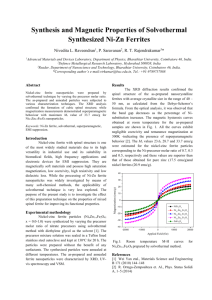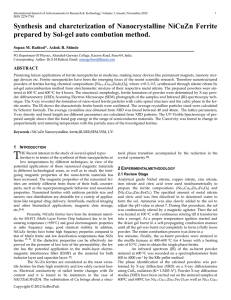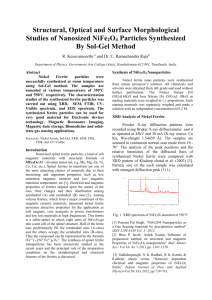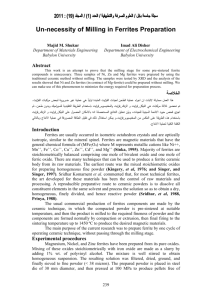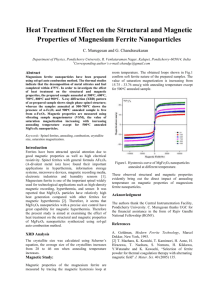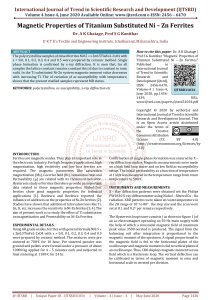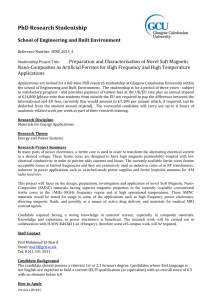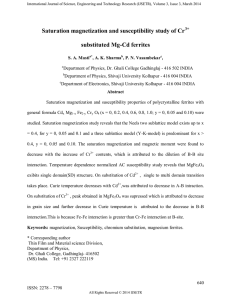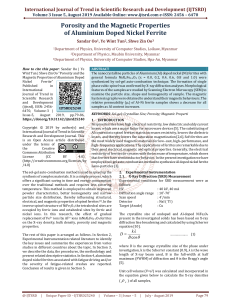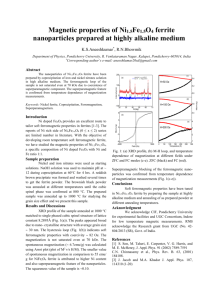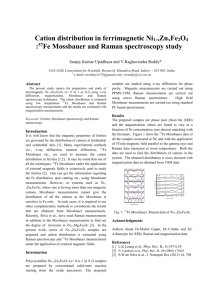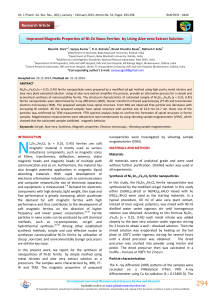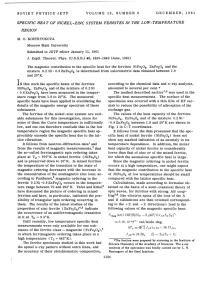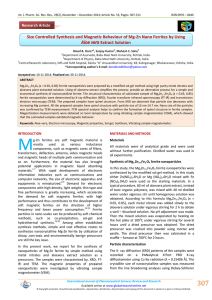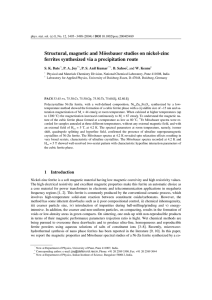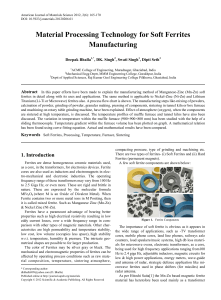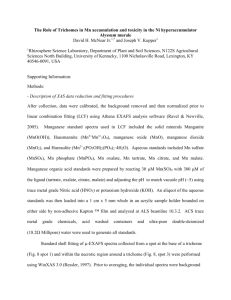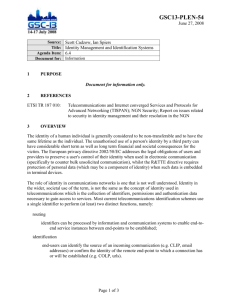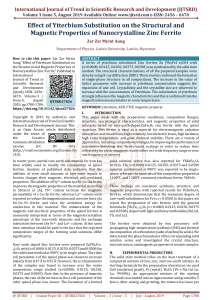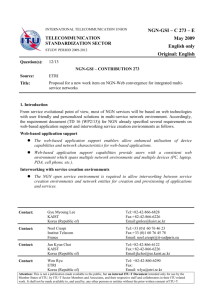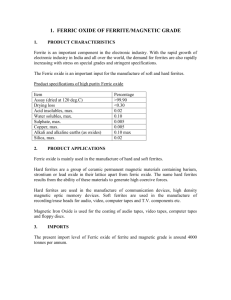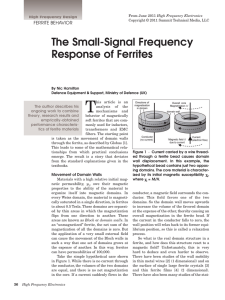View
advertisement
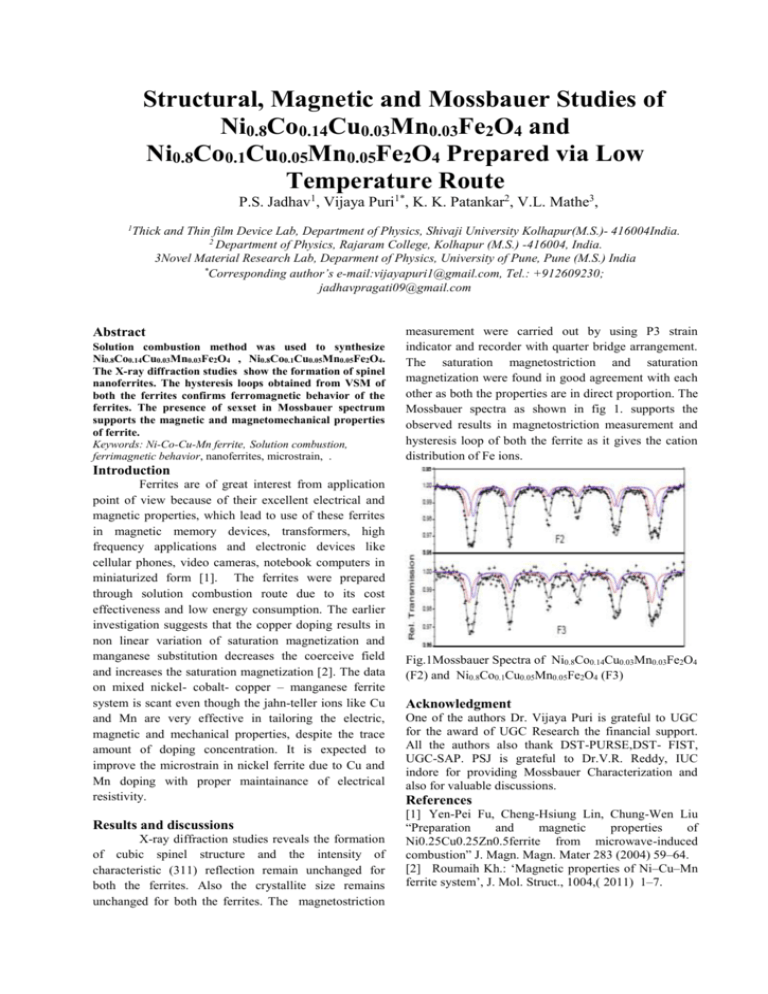
Structural, Magnetic and Mossbauer Studies of Ni0.8Co0.14Cu0.03Mn0.03Fe2O4 and Ni0.8Co0.1Cu0.05Mn0.05Fe2O4 Prepared via Low Temperature Route P.S. Jadhav1, Vijaya Puri1*, K. K. Patankar2, V.L. Mathe3, 1 Thick and Thin film Device Lab, Department of Physics, Shivaji University Kolhapur(M.S.)- 416004India. 2 Department of Physics, Rajaram College, Kolhapur (M.S.) -416004, India. 3Novel Material Research Lab, Deparment of Physics, University of Pune, Pune (M.S.) India * Corresponding author’s e-mail:vijayapuri1@gmail.com, Tel.: +912609230; jadhavpragati09@gmail.com Abstract Solution combustion method was used to synthesize Ni0.8Co0.14Cu0.03Mn0.03Fe2O4 , Ni0.8Co0.1Cu0.05Mn0.05Fe2O4. The X-ray diffraction studies show the formation of spinel nanoferrites. The hysteresis loops obtained from VSM of both the ferrites confirms ferromagnetic behavior of the ferrites. The presence of sexset in Mossbauer spectrum supports the magnetic and magnetomechanical properties of ferrite. Keywords: Ni-Co-Cu-Mn ferrite, Solution combustion, ferrimagnetic behavior, nanoferrites, microstrain, . measurement were carried out by using P3 strain indicator and recorder with quarter bridge arrangement. The saturation magnetostriction and saturation magnetization were found in good agreement with each other as both the properties are in direct proportion. The Mossbauer spectra as shown in fig 1. supports the observed results in magnetostriction measurement and hysteresis loop of both the ferrite as it gives the cation distribution of Fe ions. Introduction Ferrites are of great interest from application point of view because of their excellent electrical and magnetic properties, which lead to use of these ferrites in magnetic memory devices, transformers, high frequency applications and electronic devices like cellular phones, video cameras, notebook computers in miniaturized form [1]. The ferrites were prepared through solution combustion route due to its cost effectiveness and low energy consumption. The earlier investigation suggests that the copper doping results in non linear variation of saturation magnetization and manganese substitution decreases the coerceive field and increases the saturation magnetization [2]. The data on mixed nickel- cobalt- copper – manganese ferrite system is scant even though the jahn-teller ions like Cu and Mn are very effective in tailoring the electric, magnetic and mechanical properties, despite the trace amount of doping concentration. It is expected to improve the microstrain in nickel ferrite due to Cu and Mn doping with proper maintainance of electrical resistivity. Results and discussions X-ray diffraction studies reveals the formation of cubic spinel structure and the intensity of characteristic (311) reflection remain unchanged for both the ferrites. Also the crystallite size remains unchanged for both the ferrites. The magnetostriction Fig.1Mossbauer Spectra of Ni0.8Co0.14Cu0.03Mn0.03Fe2O4 (F2) and Ni0.8Co0.1Cu0.05Mn0.05Fe2O4 (F3) Acknowledgment One of the authors Dr. Vijaya Puri is grateful to UGC for the award of UGC Research the financial support. All the authors also thank DST-PURSE,DST- FIST, UGC-SAP. PSJ is grateful to Dr.V.R. Reddy, IUC indore for providing Mossbauer Characterization and also for valuable discussions. References [1] Yen-Pei Fu, Cheng-Hsiung Lin, Chung-Wen Liu “Preparation and magnetic properties of Ni0.25Cu0.25Zn0.5ferrite from microwave-induced combustion” J. Magn. Magn. Mater 283 (2004) 59–64. [2] Roumaih Kh.: ‘Magnetic properties of Ni–Cu–Mn ferrite system’, J. Mol. Struct., 1004,( 2011) 1–7.
